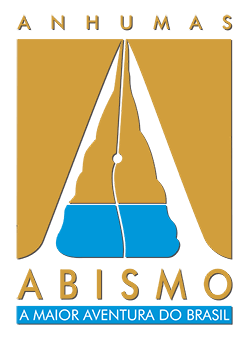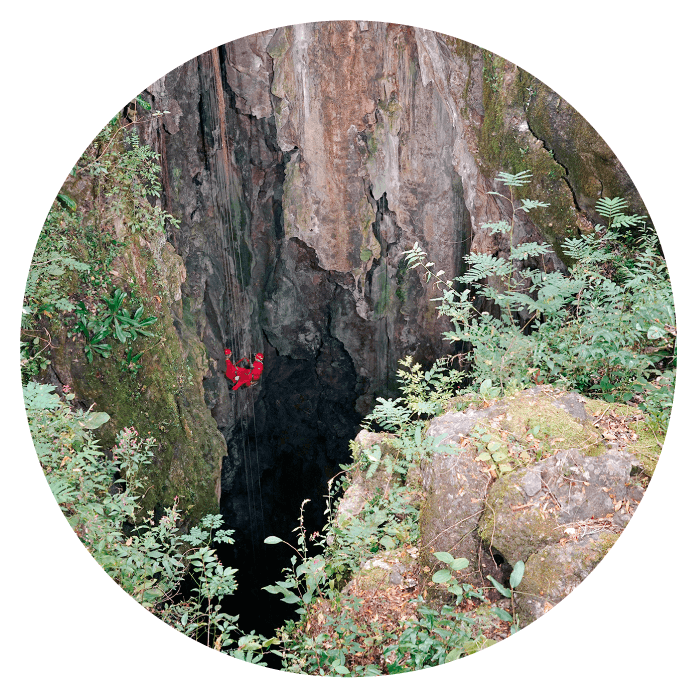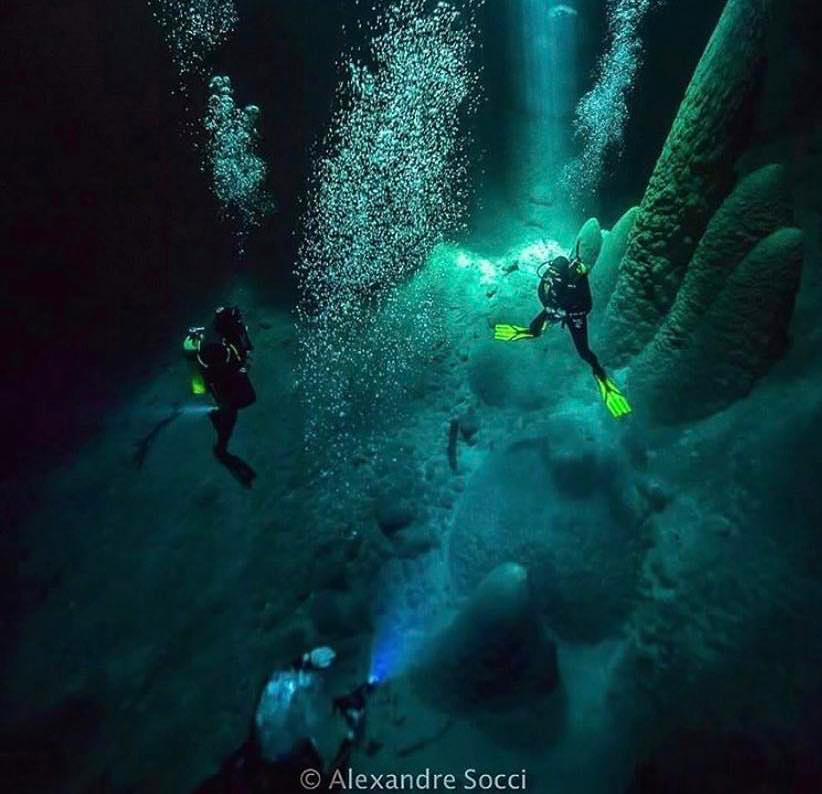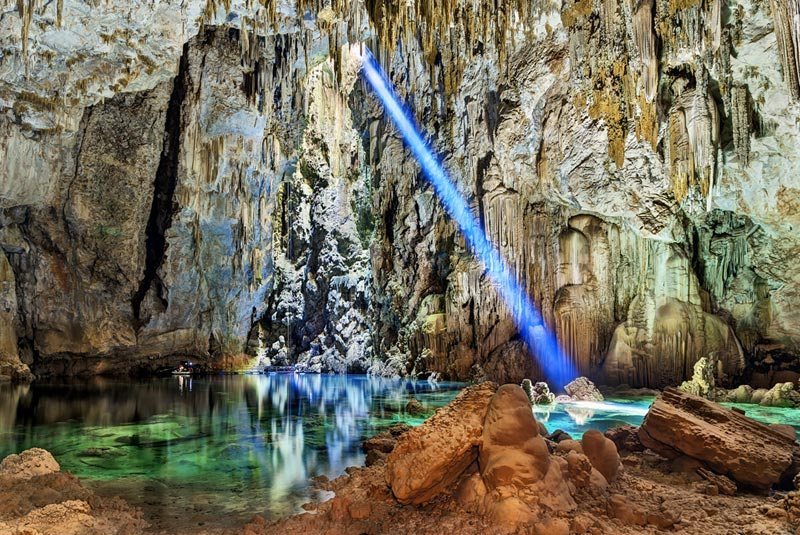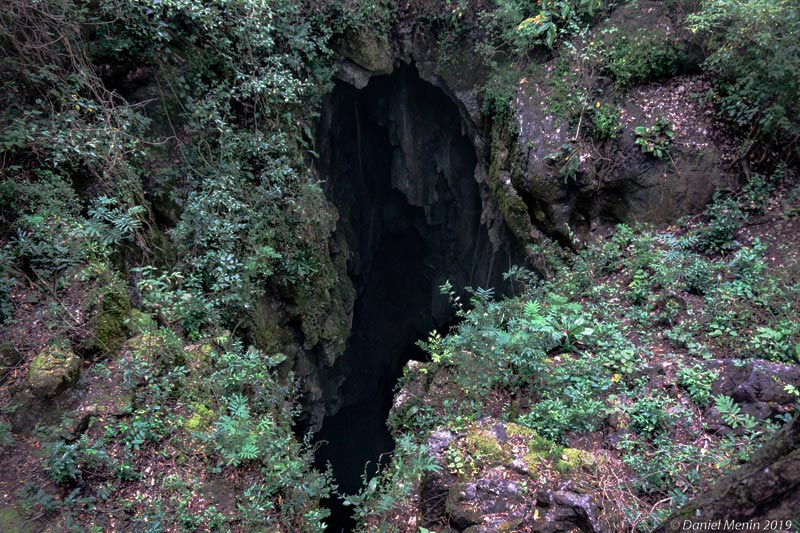Here, nature presents us with its power and perfection. The cave’s crystal-clear lake has a water volume of approximately 24,000 m³. The depth varies according to each time of the year and the rainy and dry seasons in the region, but it can reach up to 80 meters. The transparency of the water, however, provides a visibility of incredible 60 meters.
When visiting this incredible landscape, you’ll understand the greatness of nature, of time and the frailty of human life in the face of all the natural wonders.
The stalactites originate from the ceiling of the cave, “growing” downwards towards the ground. They are formed due to the slow, continuous deposition (or precipitation) of calcium carbonate, which is dragged by the water that drips from the ceiling or evaporates in the stalactite itself.
All the same, the stalagmites “grow” from the floor and towards the ceiling. They are also formed by the deposition (precipitation) of calcium carbonate from the dripping water, but from a higher surface.
This environment is annually evaluated and inspected by a team of specialized professionals, including environmental engineers and biologists, who ensure that tours do not impact the development of the cave and allow the sustainability of the microbiome, in addition to certify the safety of the visitors.
